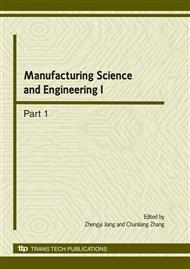p.530
p.534
p.538
p.543
p.547
p.552
p.556
p.560
p.565
Effect of Metal Powder on Blast Power of the Low Collateral Damage Ammunition
Abstract:
Traditional blast ammunition has a steel casing which turns into dangerous fragments after detonation. These steel fragments may kill civilians outside of the target. In order to adapt the need of fighting in an urban environment without hurting innocent bystanders in the process, one new kind of low collateral damage ammunition is put forward. The configuration and operational principle of this ammunition are introduced. From theoretical analysis it can be found the blast power is mainly determined by the metal powder. The effect of the metal powder’s type and magnitude on blast power is studied from static explosion test. In the test the overpressure curve is measured by the pressure sensor. The killing radius is computed from the sector target using the 25mm deal board. The initial casting velocity of the metal powder is obtained from the high speed photography. The results show tungsten powder is suitable for the low collateral damage ammunition, its diameter is about 50um. In this circumstance this ammunition can reduce collateral damage, however the damage effect is higher in the smaller area.
Info:
Periodical:
Pages:
547-551
Citation:
Online since:
March 2010
Authors:
Price:
Сopyright:
© 2010 Trans Tech Publications Ltd. All Rights Reserved
Share:
Citation:


